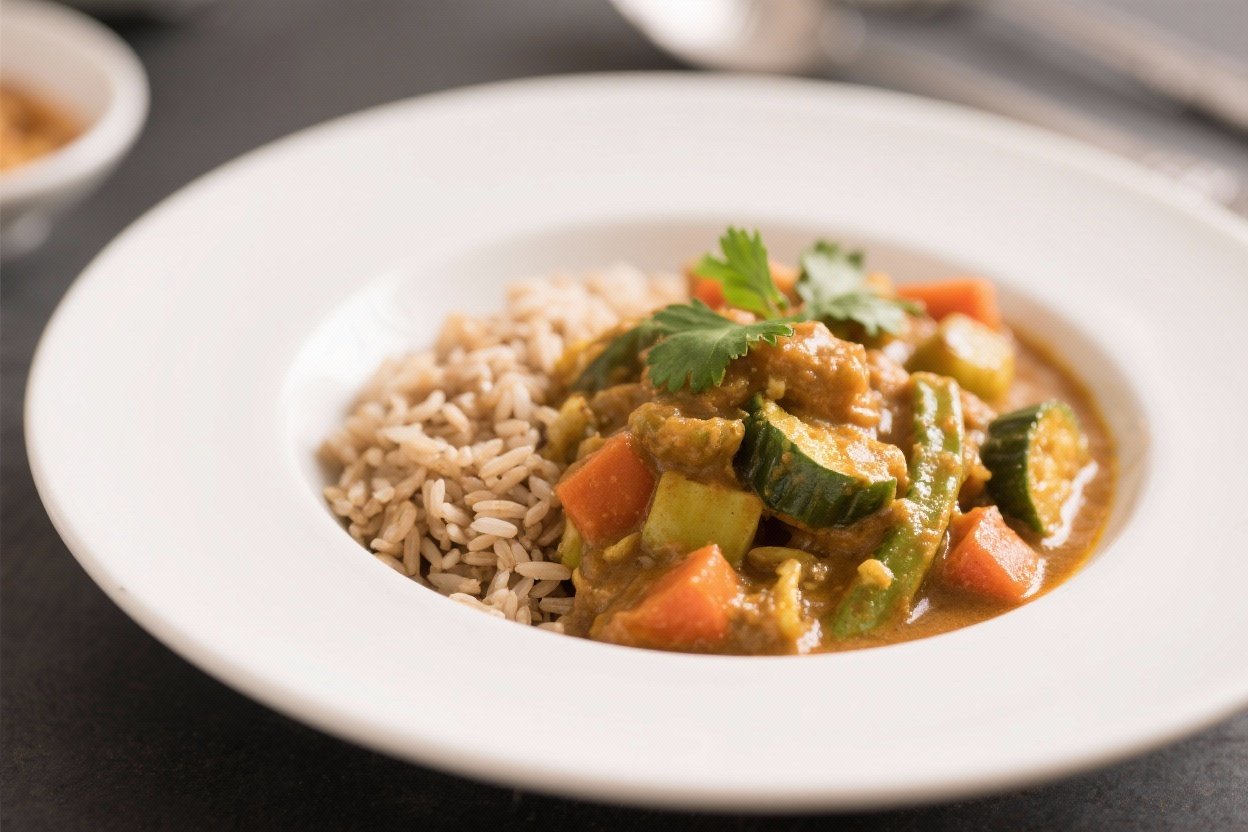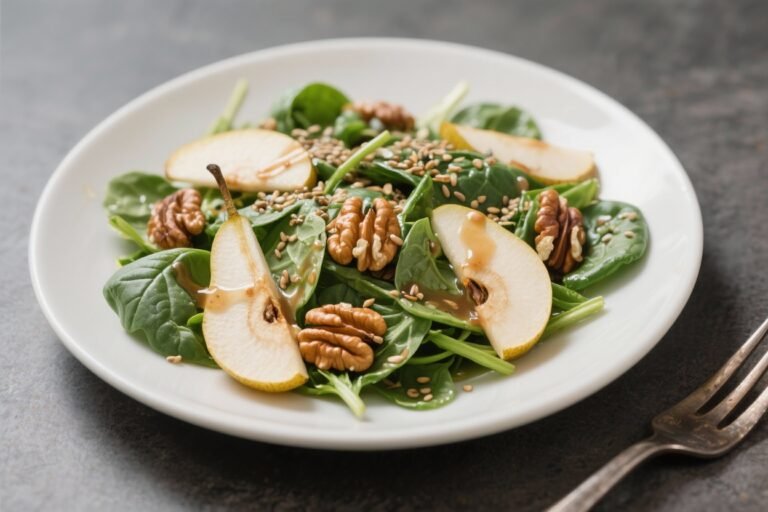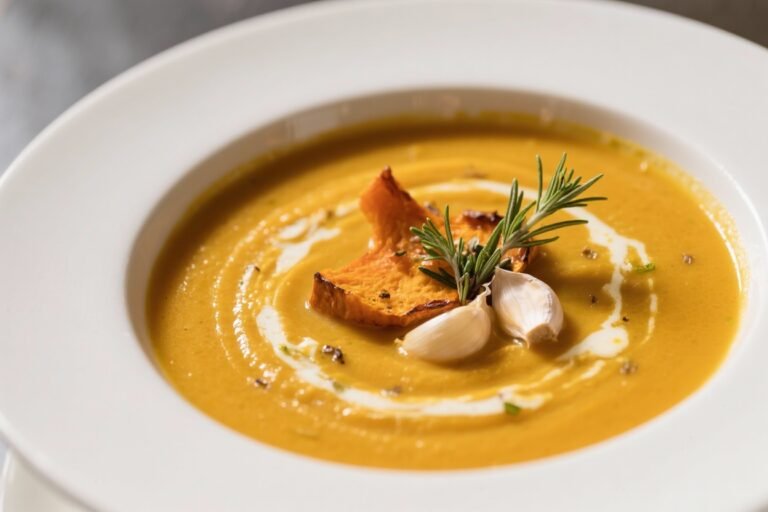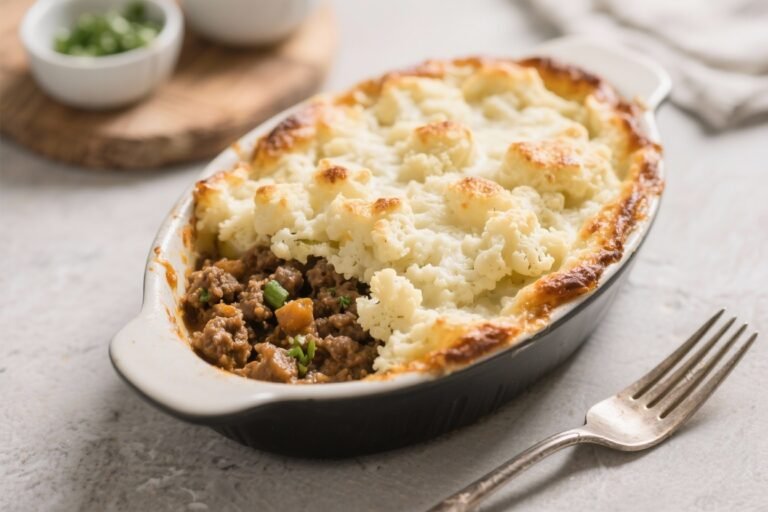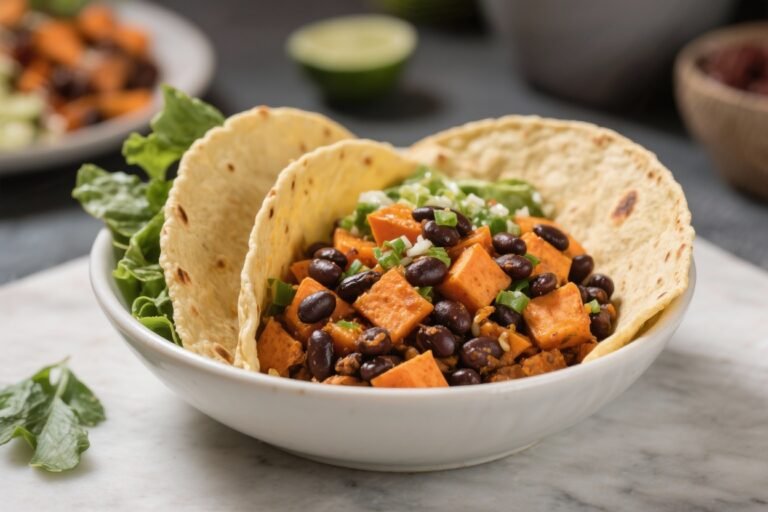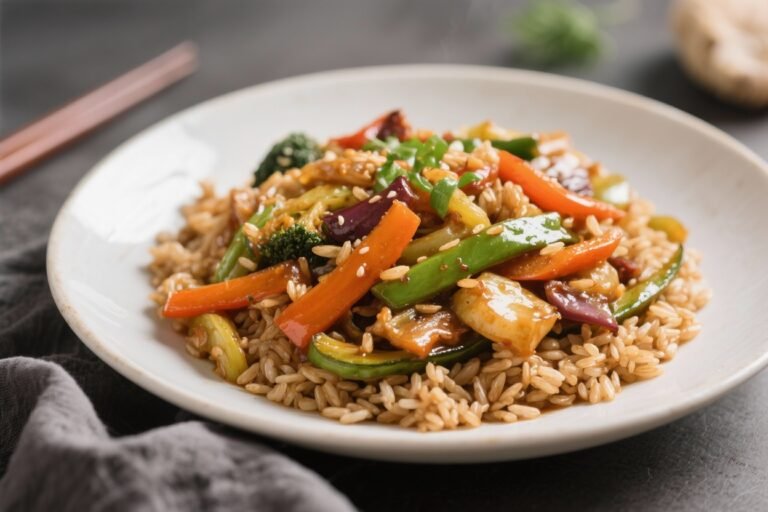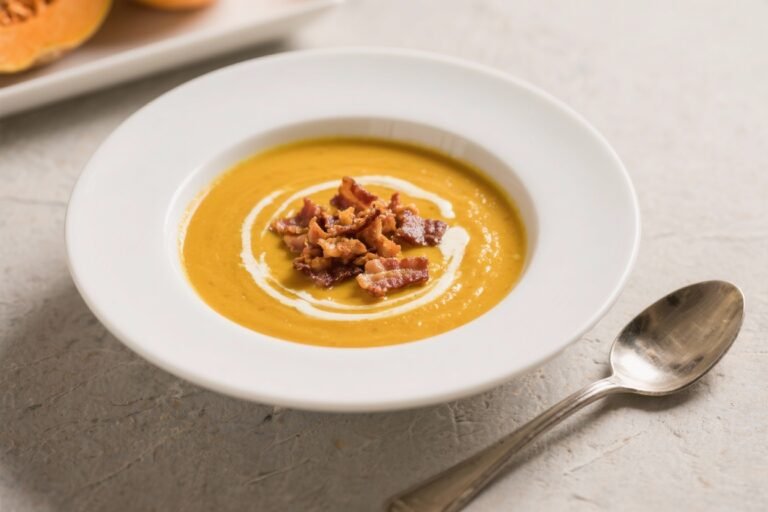High-Fiber Vegetable Curry with Brown Rice: The 30-Minute Flavor Bomb Your Gut Will Thank You For
You don’t need a chef’s coat or a trust fund to eat like you care about your body. This High-Fiber Vegetable Curry with Brown Rice is a fast, low-cost, high-impact meal that tastes like you actually know what you’re doing in the kitchen. It’s bold, it’s comforting, and it hits that sweet spot of “wow, this is healthy” without screaming “diet food.” Think creamy coconut, tender vegetables, and warm spices that make takeout look boring.
If your dinner routine feels stale, this is your plot twist.
What Makes This Recipe So Good
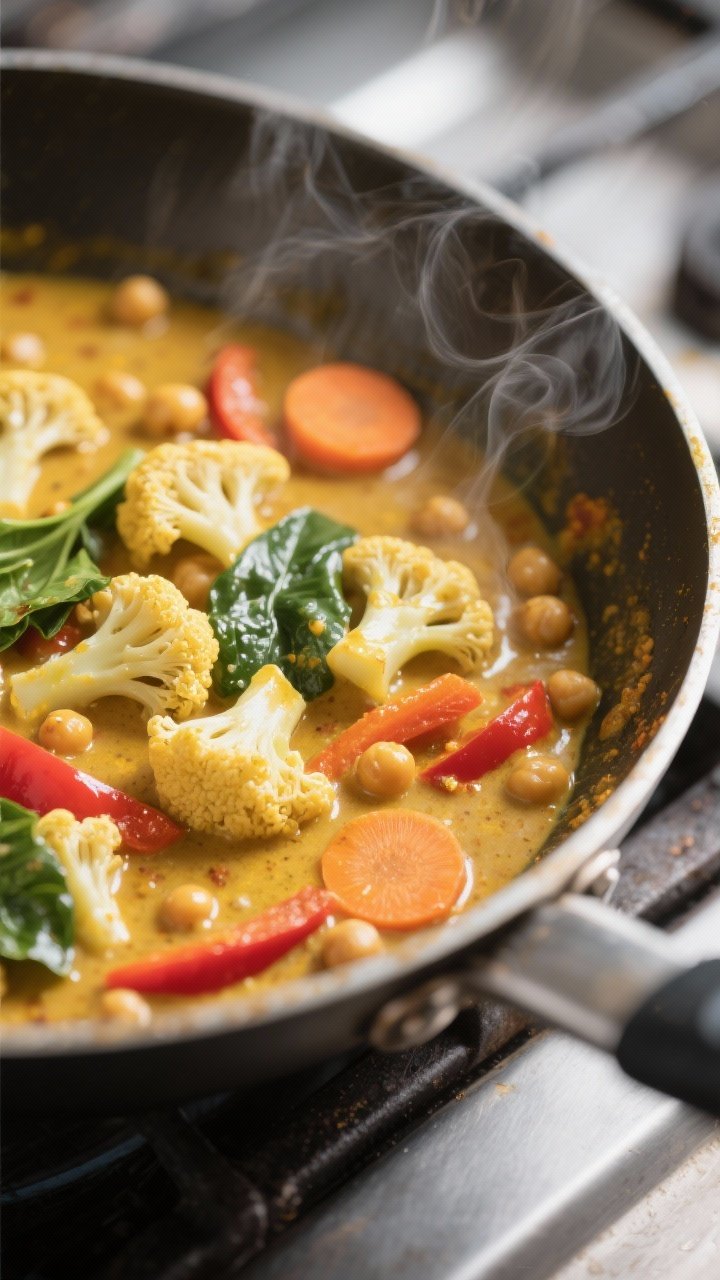
- Fiber-forward without sacrifice: Between the brown rice, chickpeas, and veggies, this clocks serious fiber—hello fullness, goodbye 9 p.m. snack attacks.
- Weeknight simple: One pot for the curry, one for the rice. Minimal dishes. Maximum payoff.
- Customizable: Use whatever vegetables you’ve got.
Frozen? Fresh? That half bell pepper?
It all works.
- Balanced flavors: Creamy coconut, acidic lime, fragrant spices, and a hint of heat. You’ll want seconds (and you’ll still feel great after).
- Meal-prep friendly: Reheats like a dream. Tastes even better the next day—like most great curries.
Ingredients
- 1 cup uncooked brown rice, rinsed
- 2 cups water or low-sodium vegetable broth (for rice)
- 1 tablespoon coconut oil or olive oil
- 1 medium yellow onion, diced
- 3 cloves garlic, minced
- 1 tablespoon fresh ginger, grated
- 2 tablespoons red or yellow curry paste or 2 teaspoons curry powder + 1 teaspoon garam masala
- 1 teaspoon ground turmeric
- 1 large carrot, sliced
- 1 red bell pepper, sliced
- 2 cups cauliflower florets
- 1 medium zucchini, sliced into half-moons
- 1 can (15 oz) chickpeas, drained and rinsed
- 1 can (14 oz) light coconut milk
- 1/2 to 3/4 cup low-sodium vegetable broth (for curry), as needed
- 1 cup baby spinach or chopped kale
- 1 tablespoon soy sauce or tamari
- 1 tablespoon lime juice (plus more to taste)
- 1 teaspoon maple syrup or honey (optional, for balance)
- Salt and black pepper to taste
- Fresh cilantro, chopped (for garnish)
- Red chili flakes or sliced fresh chili (optional, for heat)
How to Make It – Instructions
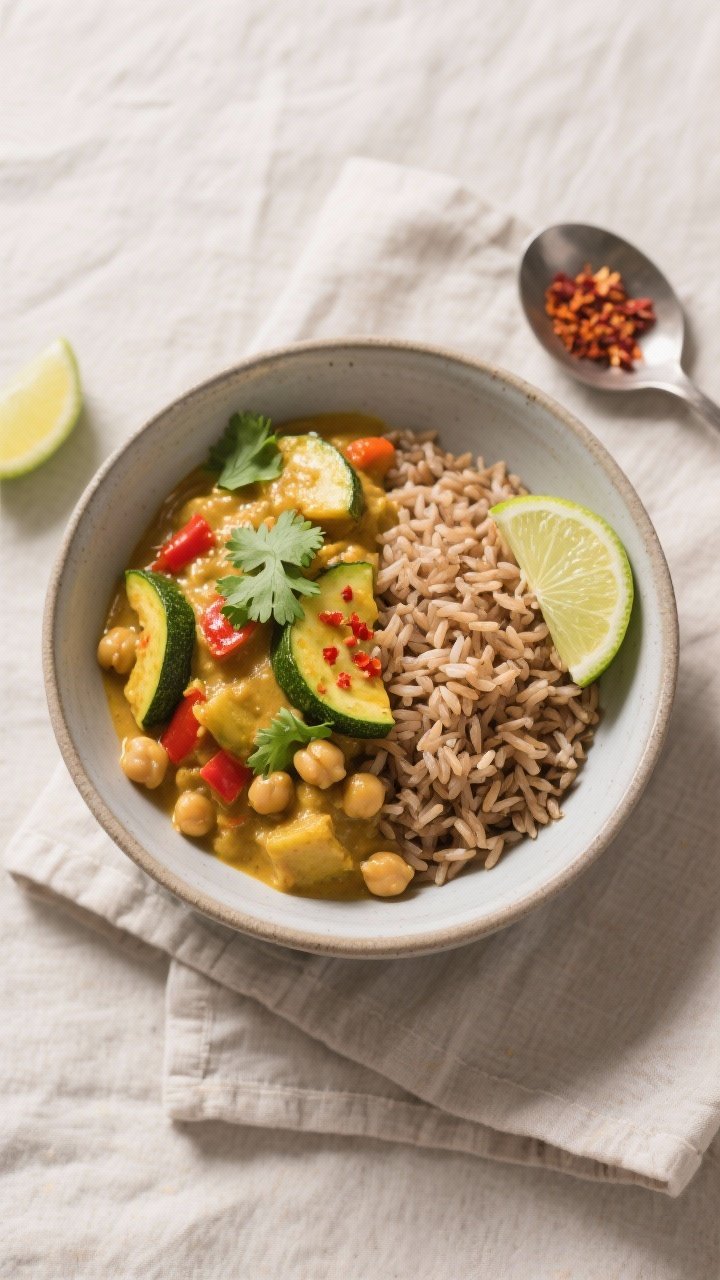
- Cook the rice: Combine brown rice and water or broth in a pot.
Bring to a boil, reduce heat, cover, and simmer 35–45 minutes until tender. Fluff and keep covered.
- Sweat the aromatics: In a large skillet or pot, heat oil over medium. Add onion with a pinch of salt; cook 3–4 minutes until translucent.
Stir in garlic and ginger; cook 1 minute until fragrant.
- Bloom the spices: Add curry paste (or dry spices) and turmeric. Stir 30–60 seconds to coat the onions and release aroma. If it looks dry, splash a bit of broth.
- Add sturdy veg: Toss in carrot, cauliflower, and bell pepper.
Stir to coat with spices for 2 minutes.
- Pour and simmer: Add coconut milk and 1/2 cup vegetable broth. Bring to a gentle simmer. Cook 6–8 minutes until veggies start to soften.
- Layer the rest: Add zucchini and chickpeas.
Simmer another 5–7 minutes until zucchini is tender but not mushy. Adjust broth for your desired thickness.
- Finish the flavor: Stir in soy sauce, lime juice, and maple syrup if using. Fold in spinach or kale until wilted, 1–2 minutes.
Taste and season with salt and pepper. Want heat? Add chili flakes.
- Plate like a pro: Spoon curry over fluffy brown rice.
Garnish with cilantro and a squeeze of extra lime. Snap a photo, flex on your group chat.
Keeping It Fresh
- Fridge: Store curry and rice separately in airtight containers for up to 4 days. Keeps texture better, IMO.
- Freezer: Curry freezes well for 2–3 months.
Portion in freezer-safe containers. Thaw in the fridge overnight and reheat gently.
- Reheat smart: Stovetop over low-medium heat with a splash of broth or water. Microwave in 60–90 second bursts, stirring in between.
- Avoid soggy greens: If you plan to freeze, add spinach/kale fresh when reheating for best color and texture.
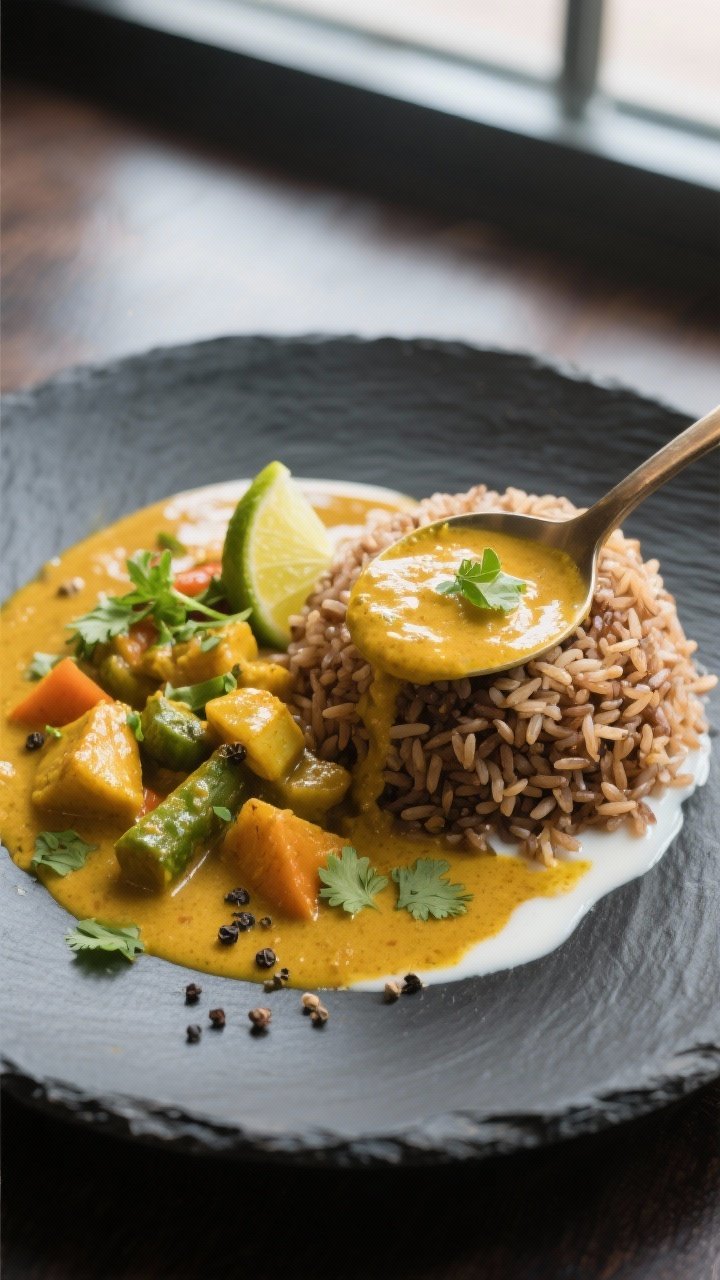
Benefits of This Recipe
- High fiber, real fullness: Brown rice, chickpeas, and veggies deliver both soluble and insoluble fiber for better digestion and satiety.
- Plant-powered protein: Chickpeas and whole grains combine for a solid protein base.
- Anti-inflammatory spices: Turmeric and ginger bring flavor and potential health perks—your joints may send a thank-you note.
- Balanced macros: Carbs from rice and veg, healthy fats from coconut milk, and protein from legumes.
No crashy energy here.
- Budget-friendly: Pantry staples, flexible produce, and zero specialized gadgets. Your wallet can breathe.
Avoid These Mistakes
- Overcooking the vegetables: Mushy cauliflower is a vibe killer. Keep a light simmer and test for tenderness.
- Skipping the spice bloom: Adding curry paste or spices straight to liquid dulls flavor.
Bloom them in oil with aromatics first.
- Under-salting: Coconut milk is rich and can mute flavors. Season gradually and taste at the end.
- One-note acidity: Don’t forget lime. That hit of acid wakes the whole dish up.
- Watery curry: Add broth slowly.
You can always add more; reducing takes time you don’t have on a Tuesday.
Different Ways to Make This
- Protein boost: Add cubed extra-firm tofu, tempeh, or edamame. Sear tofu first for better texture.
- Heat levels: Use green curry paste for herbaceous heat, or add fresh serrano for a spicy kick.
- Veg swaps: Swap zucchini for green beans or broccoli; use sweet potato for extra heft; toss in peas at the end.
- Creaminess control: Use full-fat coconut milk for extra richness, or mix half coconut milk, half broth for lighter.
- Grain options: Serve with quinoa, farro, or cauliflower rice. If you’re gluten-free, you’re already good with rice.
- Low-waste hack: Add chopped kale stems or broccoli stems early with the carrots—they’re delicious and fiber-packed.
FAQ
Can I make this oil-free?
Yes.
Sauté the onions in a splash of broth instead of oil and continue as directed. Flavor will still be great, just keep an eye on sticking.
Is canned light coconut milk necessary?
No. Full-fat works if you want it richer.
For lighter calories, use 3/4 can coconut milk and add extra broth until it’s your ideal texture.
How do I make it kid-friendly?
Use mild curry paste, skip chili, and add a little maple syrup to balance spice. Serve veggies slightly softer and let them choose their toppings—cilantro, lime, maybe a dollop of yogurt.
Can I use frozen vegetables?
Absolutely. Add sturdy frozen veggies straight to the simmering sauce and cook a few extra minutes.
Save delicate ones (like spinach) for the end.
What’s the fiber count like?
Depending on portions, you’re looking at roughly 10–15 grams per serving between the rice, chickpeas, and vegetables. Not an exact lab result, but your gut will notice.
How do I thicken a thin curry?
Simmer uncovered for a few minutes to reduce, or mash a few chickpeas into the sauce. You can also stir in a small cornstarch slurry if you’re impatient (we’ve all been there).
Can I make it in an Instant Pot?
Yes.
Sauté aromatics and spices on Sauté mode, add veggies (except spinach), chickpeas, coconut milk, and 1/2 cup broth. Pressure cook 2 minutes, quick release, stir in greens, season, and finish with lime.
In Conclusion
This High-Fiber Vegetable Curry with Brown Rice is that rare unicorn: quick, hearty, deeply flavorful, and good for you without tasting like homework. It fits weeknights, scales for meal prep, and plays nice with whatever’s in your crisper.
Keep the core formula—aromatics, spices, creamy base, bright finish—and riff forever. Your future self (and your gut) will be very, very pleased.
Printable Recipe Card
Want just the essential recipe details without scrolling through the article? Get our printable recipe card with just the ingredients and instructions.
